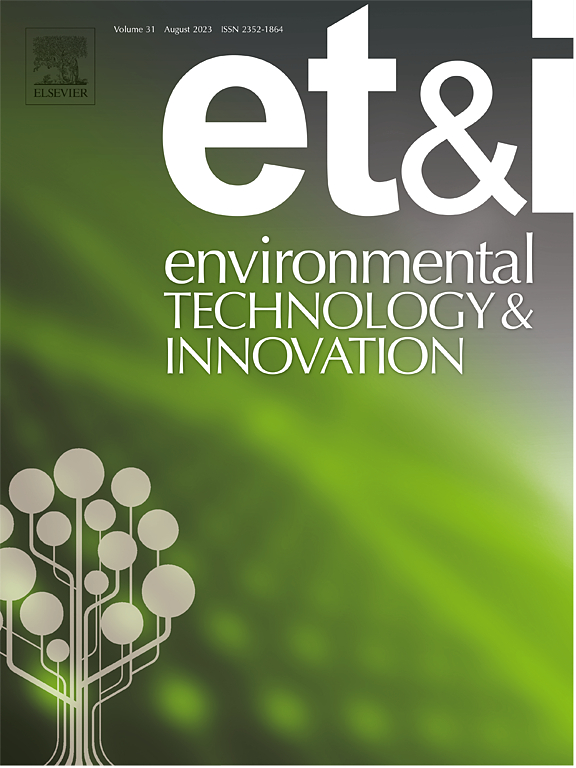Sustainable biocementation of mine tailings: Reduction of urea requirements through bicarbonate-based MICP
IF 6.7
2区 环境科学与生态学
Q1 BIOTECHNOLOGY & APPLIED MICROBIOLOGY
引用次数: 0
Abstract
Microbially induced calcite precipitation (MICP) has emerged as a promising technique to contribute to a more sustainable management of mine tailings deposits. While ureolytic activity has been the predominant driver of conventional MICP to date, the associated release of ammonia poses significant environmental hazards. This study explores a novel, environmentally friendly approach by replacing urea with sodium bicarbonate as the carbon source for MICP, with the aim of reducing urea requirements and thus ammonia release. Leveraging the principles of the MICP, it was observed that when urea concentration was reduced to 0.7 M, by replacing it with bicarbonate, surface strength was close to 400 kPa. Furthermore, wind tunnel testing showed a significant reduction in dust emission, where the mass loss rate of the biocemented sample was below 10 kg m⁻2 h⁻1, which means a 9-fold reduction compared to untreated samples. So, it was demonstrated that bicarbonate can effectively replace urea, achieving a relevant reduction of up to 75 % in urea use without compromising the surface strength of the biocemented tailings and reducing the environmental hazards of ammonia release. These results highlight the potential of bicarbonate-based MICP as an innovative and sustainable approach to mitigate the environmental impacts associated with tailings deposits.
矿山尾矿的可持续生物胶结:通过碳酸氢盐基MICP减少尿素需求
微生物诱导方解石沉淀(MICP)已成为一种有前途的技术,有助于更可持续地管理矿山尾矿。虽然迄今为止,尿溶活性一直是传统MICP的主要驱动因素,但相关的氨释放会造成重大的环境危害。本研究探索了一种新颖、环保的方法,用碳酸氢钠代替尿素作为MICP的碳源,目的是减少尿素需求,从而减少氨的释放。利用MICP原理,观察到当尿素浓度降至0.7 M时,用碳酸氢盐代替,表面强度接近400 kPa。此外,风洞测试显示,在尘埃排放方面有显著的减少,生物胶合剂样品的质量流失率低于10 kg m - 2 h - 1,这意味着与未处理的样品相比减少了9倍。因此,研究表明,碳酸氢盐可以有效地替代尿素,在不影响生物胶结尾矿表面强度和减少氨释放对环境危害的情况下,实现尿素用量减少高达75% %。这些结果突出了以碳酸氢盐为基础的MICP作为一种创新和可持续的方法来减轻与尾矿库相关的环境影响的潜力。
本文章由计算机程序翻译,如有差异,请以英文原文为准。
求助全文
约1分钟内获得全文
求助全文
来源期刊

Environmental Technology & Innovation
Environmental Science-General Environmental Science
CiteScore
14.00
自引率
4.20%
发文量
435
审稿时长
74 days
期刊介绍:
Environmental Technology & Innovation adopts a challenge-oriented approach to solutions by integrating natural sciences to promote a sustainable future. The journal aims to foster the creation and development of innovative products, technologies, and ideas that enhance the environment, with impacts across soil, air, water, and food in rural and urban areas.
As a platform for disseminating scientific evidence for environmental protection and sustainable development, the journal emphasizes fundamental science, methodologies, tools, techniques, and policy considerations. It emphasizes the importance of science and technology in environmental benefits, including smarter, cleaner technologies for environmental protection, more efficient resource processing methods, and the evidence supporting their effectiveness.
 求助内容:
求助内容: 应助结果提醒方式:
应助结果提醒方式:


